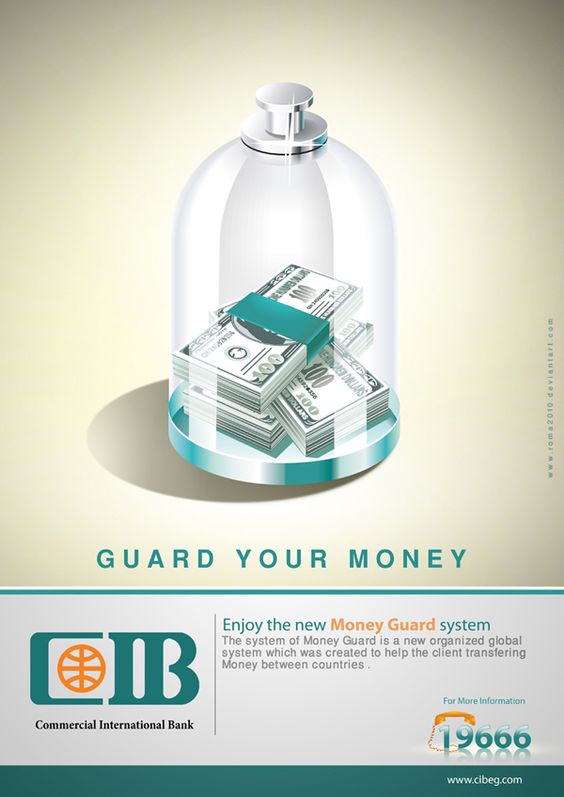Maximize Your Coverage: The 5 Costliest Mistakes in Classic Car Insurance

Revving up the excitement of owning a classic car is one thing, but protecting that investment? That’s a whole different ride. Classic cars are more than just metal and paint – they’re cherished pieces of history, often representing years of hard work and passion. However, navigating the world of classic car insurance can be tricky terrain. One misstep could leave you with costly consequences that hit harder than a flat tire on the open road.
In this post, we’ll steer you clear of the five most common—and costliest—mistakes classic car owners make when it comes to their insurance coverage. Buckle up as we guide you through these pitfalls to ensure your prized possession gets the protection it truly deserves.
Using Standard Auto Insurance Instead of Classic Car Coverage
This is the big one. A lot of new classic car owners think, “It’s a car, so I’ll just add it to my regular policy.” Wrong move. Standard auto insurance is designed for vehicles that depreciate, not ones that go up in value or get babied in the garage. Classic car insurance uses something called “agreed value” coverage, which means you and the insurer agree on the value of the car up front. No guessing. No arguing. No surprise payouts if something happens.
Alex Manos classic cars, for example, are going to be worth way more than your late-model Toyota. If you use regular insurance and your car is totaled, you could get far less than its worth. Think Craigslist pricing when you were expecting Barrett-Jackson.
Underestimating the Value of the Car
Let’s say you got a great deal on your car or you restored it yourself. Cool. But if you don’t update your insurance to reflect the current market value, you could be in trouble. Classic car values can climb fast, and if you’re still insured based on what you paid, or worse, what it was worth five years ago, you’re leaving money on the table. Make sure your policy reflects your car’s true worth. If it’s appreciated, update your agreed value regularly. Don’t let the insurance company set the value without your input.

Driving Like It’s Your Daily (and Not Reporting It)
Classic car insurance typically comes with mileage limits and restrictions. If you’re using your classic for commuting or daily errands and you don’t tell your insurer, you might void your policy entirely. Most companies allow occasional pleasure driving and car shows, but not daily use. That’s a no-go unless you’re upfront about it (and prepared to pay more). Bottom line: Be honest about how you use the car. The rates are cheaper because the risk is lower. Don’t ruin that by sneaking in weekday grocery runs.
Skipping Specialty Add-Ons
You might think you’re saving a few bucks by keeping your policy basic, but not adding coverage for spare parts, towing, or custom modifications can cost you more in the long run. If you’ve got rare trim pieces, a rebuilt engine, or even just a custom paint job, make sure it’s all documented and covered. Some companies even offer coverage for tools or parts stored in your garage. It’s worth a call to your agent. Trust us—custom gear isn’t cheap to replace.
Choosing the Wrong Insurance Company
Not every insurer knows how to handle classic cars. If your agent doesn’t understand the difference between a ’68 Mustang Fastback and a ’68 Mustang Coupe, it’s time to find someone who does. Look for companies that specialize in collector vehicles. They know the market, they understand your needs, and they’re more likely to offer flexible coverage that makes sense for how you use the car.
Insuring a classic car isn’t complicated—but it is different. A little extra homework now can save you a lot of money and frustration down the road. Your classic car is more than just metal and chrome—it’s an investment, a passion project, and probably one of your favorite things to drive. So don’t cut corners when it comes to protecting it.…


 Life is unpredictable, and sometimes financial emergencies arise when you least expect them. When cash is needed quickly, selling your gold or silver might seem like the only option. However, parting with these assets can be a tough decision. By opting for a collateral loan instead, you can access immediate funds without losing ownership of your precious metals.
Life is unpredictable, and sometimes financial emergencies arise when you least expect them. When cash is needed quickly, selling your gold or silver might seem like the only option. However, parting with these assets can be a tough decision. By opting for a collateral loan instead, you can access immediate funds without losing ownership of your precious metals. Estate planning can be complex, but using gold and silver as collateral offers unique advantages. These precious metals can not only help preserve wealth but also provide flexibility in managing your estate. By borrowing against your stack, you maintain ownership of the asset while unlocking needed liquidity. This is particularly useful when heirs need funds for unexpected expenses or tax obligations associated with inheritance. Gold and silver loans also allow for more strategic decision-making. You’re not forced to sell during a downturn; instead, you have time to assess market conditions before deciding on liquidation options.
Estate planning can be complex, but using gold and silver as collateral offers unique advantages. These precious metals can not only help preserve wealth but also provide flexibility in managing your estate. By borrowing against your stack, you maintain ownership of the asset while unlocking needed liquidity. This is particularly useful when heirs need funds for unexpected expenses or tax obligations associated with inheritance. Gold and silver loans also allow for more strategic decision-making. You’re not forced to sell during a downturn; instead, you have time to assess market conditions before deciding on liquidation options.


 According to
According to 
 When considering an online payday loan, the first step is verifying the lender’s legitimacy. Not all lenders operate with your best interests in mind. That said, you’re going to look for licensed providers regulated by state authorities. Each state has different laws that govern payday lending, and legitimate lenders will adhere to these regulations.
When considering an online payday loan, the first step is verifying the lender’s legitimacy. Not all lenders operate with your best interests in mind. That said, you’re going to look for licensed providers regulated by state authorities. Each state has different laws that govern payday lending, and legitimate lenders will adhere to these regulations. When considering online payday loans, security is paramount. A reputable lender should prioritize the protection of your personal and
When considering online payday loans, security is paramount. A reputable lender should prioritize the protection of your personal and 


 Diversification is the name of the game if you want to protect yourself from market downturns that may affect any single investment. Each type of asset has its level of risk and return potential. For example, while stocks offer high growth potential but come with higher risks, bonds are generally more stable but offer lower returns. By diversifying across various assets, you can balance risk and reward depending on every financial goal and risk tolerance you have in mind.
Diversification is the name of the game if you want to protect yourself from market downturns that may affect any single investment. Each type of asset has its level of risk and return potential. For example, while stocks offer high growth potential but come with higher risks, bonds are generally more stable but offer lower returns. By diversifying across various assets, you can balance risk and reward depending on every financial goal and risk tolerance you have in mind. Growth stocks are a very sexy and enticing option for those who want long-term profit. These companies maintain their capital cycle by reinvesting their profits back into the business to fuel expansion and innovation. When selecting growth stocks, research is key. Look for companies with solid fundamentals, innovative, winning products or services, and a very competitive edge in their industry.
Growth stocks are a very sexy and enticing option for those who want long-term profit. These companies maintain their capital cycle by reinvesting their profits back into the business to fuel expansion and innovation. When selecting growth stocks, research is key. Look for companies with solid fundamentals, innovative, winning products or services, and a very competitive edge in their industry.
 The Percentage Risk Model is a popular method used by traders to determine the size of their positions based on the level of risk they are willing to take. This strategy involves calculating and determining the percentage of your trading account that you’re willing to risk on a single trade.
The Percentage Risk Model is a popular method used by traders to determine the size of their positions based on the level of risk they are willing to take. This strategy involves calculating and determining the percentage of your trading account that you’re willing to risk on a single trade.  Developed by John L. Kelly Jr. in the 1950s, this used-to-be secret formula takes into account both the probability of success and the huge potential reward of a trade.
Developed by John L. Kelly Jr. in the 1950s, this used-to-be secret formula takes into account both the probability of success and the huge potential reward of a trade. 
 When it comes to shipping goods, the financial risks can be significant. Unexpected events like theft, accidents, or natural disasters can lead to costly damages or total loss of your cargo. This is where cargo insurance steps in to provide a safety net for your business finances. Securing a cargo insurance policy means your investment in freight transportation is protected against unforeseen circumstances.
When it comes to shipping goods, the financial risks can be significant. Unexpected events like theft, accidents, or natural disasters can lead to costly damages or total loss of your cargo. This is where cargo insurance steps in to provide a safety net for your business finances. Securing a cargo insurance policy means your investment in freight transportation is protected against unforeseen circumstances. As a business owner, peace of mind is priceless when it comes to ensuring that your goods arrive safely and intact. Cargo insurance provides that sense of security, knowing that even in unforeseen circumstances like accidents or theft, your investment is protected. In today’s fast-paced global marketplace, having peace of mind through comprehensive cargo insurance coverage is not just an option but a necessity for any business involved in transporting goods. It offers reassurance and certainty in an otherwise unpredictable industry, giving you the assurance that your freight is safeguarded every step of the way.…
As a business owner, peace of mind is priceless when it comes to ensuring that your goods arrive safely and intact. Cargo insurance provides that sense of security, knowing that even in unforeseen circumstances like accidents or theft, your investment is protected. In today’s fast-paced global marketplace, having peace of mind through comprehensive cargo insurance coverage is not just an option but a necessity for any business involved in transporting goods. It offers reassurance and certainty in an otherwise unpredictable industry, giving you the assurance that your freight is safeguarded every step of the way.…
 When the stock market is volatile, increasing your regular contributions can be a really good move. While it may seem counterintuitive to invest more during uncertain times, consistently adding funds to your portfolio can help you take advantage of lower prices and potentially higher returns in the future. By increasing your contributions when stock prices are down, you’re essentially buying shares at a discounted rate.
When the stock market is volatile, increasing your regular contributions can be a really good move. While it may seem counterintuitive to invest more during uncertain times, consistently adding funds to your portfolio can help you take advantage of lower prices and potentially higher returns in the future. By increasing your contributions when stock prices are down, you’re essentially buying shares at a discounted rate. Last but not least, rebalancing can really help. If you can adjust your asset allocation back to its original target to maintain good diversification and manage risk effectively, you’re up for a good thing. Take a closer look at your investments and consider selling off overperforming assets while purchasing undervalued ones. This strategic move can help you stay on track with your long-term financial goals.
Last but not least, rebalancing can really help. If you can adjust your asset allocation back to its original target to maintain good diversification and manage risk effectively, you’re up for a good thing. Take a closer look at your investments and consider selling off overperforming assets while purchasing undervalued ones. This strategic move can help you stay on track with your long-term financial goals.










 It’s true that silver and digital currencies have their own pros and cons. However, the digital currencies’ accessibility and portability are unbeatable. Click here to
It’s true that silver and digital currencies have their own pros and cons. However, the digital currencies’ accessibility and portability are unbeatable. Click here to  With silver, there is always a risk of theft or loss, as physical assets can be easily stolen or misplaced. Digital currencies, on the other hand, are stored in secure wallets that utilize advanced encryption techniques to ensure the safety of your
With silver, there is always a risk of theft or loss, as physical assets can be easily stolen or misplaced. Digital currencies, on the other hand, are stored in secure wallets that utilize advanced encryption techniques to ensure the safety of your 


 Regular audits and quality checks are indispensable for maintaining data accuracy and integrity. Conducting periodic reviews and audits of data entries within the Federal Processing Registry helps identify discrepancies, errors, or inconsistencies. These checks enable prompt rectification and ensure that data remains accurate and reliable.
Regular audits and quality checks are indispensable for maintaining data accuracy and integrity. Conducting periodic reviews and audits of data entries within the Federal Processing Registry helps identify discrepancies, errors, or inconsistencies. These checks enable prompt rectification and ensure that data remains accurate and reliable. Security measures are fundamental in protecting sensitive data within the Federal Processing Registry. Enforcing strict access controls, including user authentication and role-based access, ensures that only authorized personnel can access and modify data. Implementing encryption protocols and regular security updates fortify the system against potential cyber threats.
Security measures are fundamental in protecting sensitive data within the Federal Processing Registry. Enforcing strict access controls, including user authentication and role-based access, ensures that only authorized personnel can access and modify data. Implementing encryption protocols and regular security updates fortify the system against potential cyber threats.






 One of the primary factors contributing to luxury watches’ appeal as an investment is their rarity and exclusivity. High-end watch manufacturers often produce limited quantities of their most coveted models, making them highly sought after by collectors. As demand exceeds supply, the value of these watches tends to appreciate over time. Additionally, luxury brands often release special editions or collaborate with influential figures, further enhancing the exclusivity and desirability of their timepieces.
One of the primary factors contributing to luxury watches’ appeal as an investment is their rarity and exclusivity. High-end watch manufacturers often produce limited quantities of their most coveted models, making them highly sought after by collectors. As demand exceeds supply, the value of these watches tends to appreciate over time. Additionally, luxury brands often release special editions or collaborate with influential figures, further enhancing the exclusivity and desirability of their timepieces. The market for luxury watches continues to grow at a steady pace, driven by increasing global demand. As economies prosper and disposable incomes rise, more individuals embrace luxury consumables as a symbol of personal success and prestige. This shift in consumer behavior has led to an expansion of the luxury watch market, providing ample opportunities for investors. Furthermore, emerging markets, such as China and India, have shown a growing appetite for luxury watches, further fueling the demand.
The market for luxury watches continues to grow at a steady pace, driven by increasing global demand. As economies prosper and disposable incomes rise, more individuals embrace luxury consumables as a symbol of personal success and prestige. This shift in consumer behavior has led to an expansion of the luxury watch market, providing ample opportunities for investors. Furthermore, emerging markets, such as China and India, have shown a growing appetite for luxury watches, further fueling the demand.
 Let’s talk about one of the most tangible options – purchasing physical bullion. There’s something undeniably alluring about holding a gleaming bar or coin in your hands, feeling its weight, and admiring its beauty. Many investors turn to bullion because of its inherent value and the sense of security it provides. Unlike paper assets, which often can be affected by market fluctuations or economic downturns, physical gold has stood the test of time as a reliable store of wealth.
Let’s talk about one of the most tangible options – purchasing physical bullion. There’s something undeniably alluring about holding a gleaming bar or coin in your hands, feeling its weight, and admiring its beauty. Many investors turn to bullion because of its inherent value and the sense of security it provides. Unlike paper assets, which often can be affected by market fluctuations or economic downturns, physical gold has stood the test of time as a reliable store of wealth. If you’re looking for a more advanced and potentially higher-risk way to invest in gold, then gold futures might be worth considering. Gold futures are contracts that make it possible for investors to buy or sell any specific amount of gold on a future date at a predetermined price. With just a fraction of the total contract value required as a margin, investors can control much larger amounts of gold. This means that even small changes in the price of gold can lead to significant profits (or losses). However, it’s important to note that trading gold futures requires knowledge and expertise. The market can be super volatile, and prices can easily fluctuate rapidly depending on various factors. These usually include economic indicators, geopolitical events, and investor sentiment.
If you’re looking for a more advanced and potentially higher-risk way to invest in gold, then gold futures might be worth considering. Gold futures are contracts that make it possible for investors to buy or sell any specific amount of gold on a future date at a predetermined price. With just a fraction of the total contract value required as a margin, investors can control much larger amounts of gold. This means that even small changes in the price of gold can lead to significant profits (or losses). However, it’s important to note that trading gold futures requires knowledge and expertise. The market can be super volatile, and prices can easily fluctuate rapidly depending on various factors. These usually include economic indicators, geopolitical events, and investor sentiment.




 When considering venturing into the casino business, it is crucial to have a solid business plan in place. A thorough analysis of this plan with your financial advisor is essential to ensure its feasibility and potential for success. One aspect that should be discussed is the market research conducted for your business. This includes understanding the target audience, competition, and market trends. By examining these factors, you can determine if there is sufficient demand for your casino venture and how you can position yourself in the industry. Financial projections are another vital component of your business plan analysis. Your financial advisor will help you evaluate revenue forecasts, cost estimates, and cash flow projections. This assessment will give you a clear picture of the expected profitability of your casino business.
When considering venturing into the casino business, it is crucial to have a solid business plan in place. A thorough analysis of this plan with your financial advisor is essential to ensure its feasibility and potential for success. One aspect that should be discussed is the market research conducted for your business. This includes understanding the target audience, competition, and market trends. By examining these factors, you can determine if there is sufficient demand for your casino venture and how you can position yourself in the industry. Financial projections are another vital component of your business plan analysis. Your financial advisor will help you evaluate revenue forecasts, cost estimates, and cash flow projections. This assessment will give you a clear picture of the expected profitability of your casino business. Return on Investment (ROI) is crucial when venturing into the casino business. As an entrepreneur, assessing the potential return you can expect from your investment is important. ROI measures the profitability of an investment relative to its cost and is usually expressed as a percentage. In the casino industry, ROI can vary greatly depending on various factors such as location, target market, competition, and operational costs. It’s essential to discuss this with your financial advisor to gain insights into what kind of returns you can anticipate in this industry. Your financial advisor will help you analyze the feasibility of your business plan and determine if it aligns with your desired ROI goals. They will assess factors such as revenue streams, operating expenses, and projected growth to provide you with a realistic expectation of returns.
Return on Investment (ROI) is crucial when venturing into the casino business. As an entrepreneur, assessing the potential return you can expect from your investment is important. ROI measures the profitability of an investment relative to its cost and is usually expressed as a percentage. In the casino industry, ROI can vary greatly depending on various factors such as location, target market, competition, and operational costs. It’s essential to discuss this with your financial advisor to gain insights into what kind of returns you can anticipate in this industry. Your financial advisor will help you analyze the feasibility of your business plan and determine if it aligns with your desired ROI goals. They will assess factors such as revenue streams, operating expenses, and projected growth to provide you with a realistic expectation of returns.

 With this approach, investors have the opportunity to directly own shares of specific companies rather than relying on the performance of an entire market or index. But why? The answer is its potential for higher returns. When you carefully select strong and promising companies, you have the chance to see significant growth in your investment.
With this approach, investors have the opportunity to directly own shares of specific companies rather than relying on the performance of an entire market or index. But why? The answer is its potential for higher returns. When you carefully select strong and promising companies, you have the chance to see significant growth in your investment.

 One of the most common blunders investors make is not conducting thorough research before choosing a Gold IRA company. Verifying the company’s reputation, experience, and track record in the precious metals industry is crucial. Look for customer reviews, ratings from reputable sources, and complaints filed with regulatory bodies. A reputable Gold IRA company will be transparent about its fees, policies, and storage options, giving you confidence in your investment decision.
One of the most common blunders investors make is not conducting thorough research before choosing a Gold IRA company. Verifying the company’s reputation, experience, and track record in the precious metals industry is crucial. Look for customer reviews, ratings from reputable sources, and complaints filed with regulatory bodies. A reputable Gold IRA company will be transparent about its fees, policies, and storage options, giving you confidence in your investment decision.
